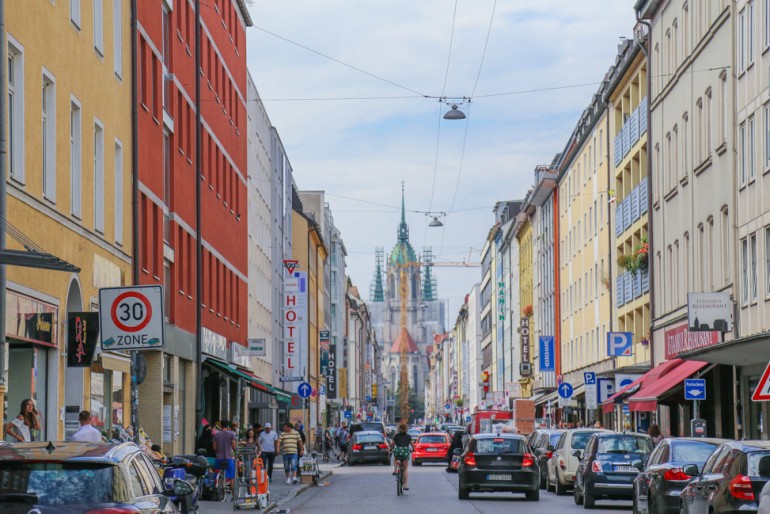Sponsored Listings:
As it turns out, Munich with a local tour guide is even better than Munich on your own, even if you are 33 years old and like to be in your accommodation by 10pm vs. your former 20-year-old self who burned the midnight oil and thought coming back to her hostel at 5am was perfectly acceptable. (Shame on you, 22-Year-Old Self.)
So Munich with a trio of guides is basically the ideal scenario.
Since Christoph and Anna were both born and raised in Munich, we felt like we really scored by way of getting the most knowledgeable tour guides we could have asked for. And given that exactly the same week a year prior, they had come to our little corner of Tennessee for six nights with their then-infant Leo, it was really fun to flip-flop the guiding duties.
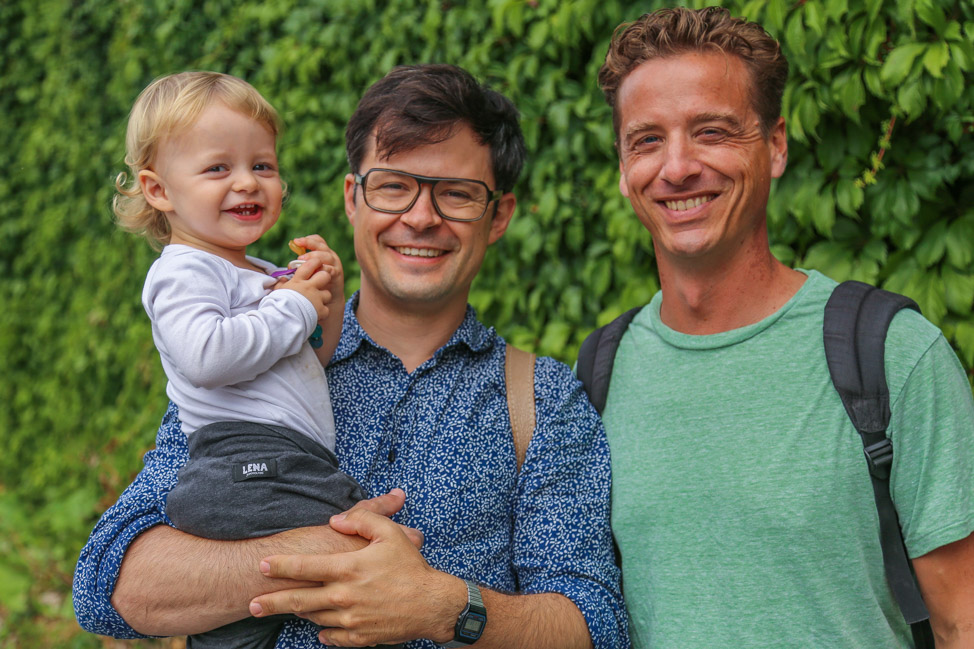
Here’s how our time there went down.
Thursday
We pulled up in our rental car and checked into our hotel in the Isarvorstadt district. We booked the Hotel Deutsche Eiche through credit card points, but had we not, it would have run us $175 a night, including breakfast each day—and that was for our own standalone flat with a kitchenette and separate living room space. It was incredibly spacious and historic to boot: It once belonged to famed Munich artist Rainer Werner Fassbinder.
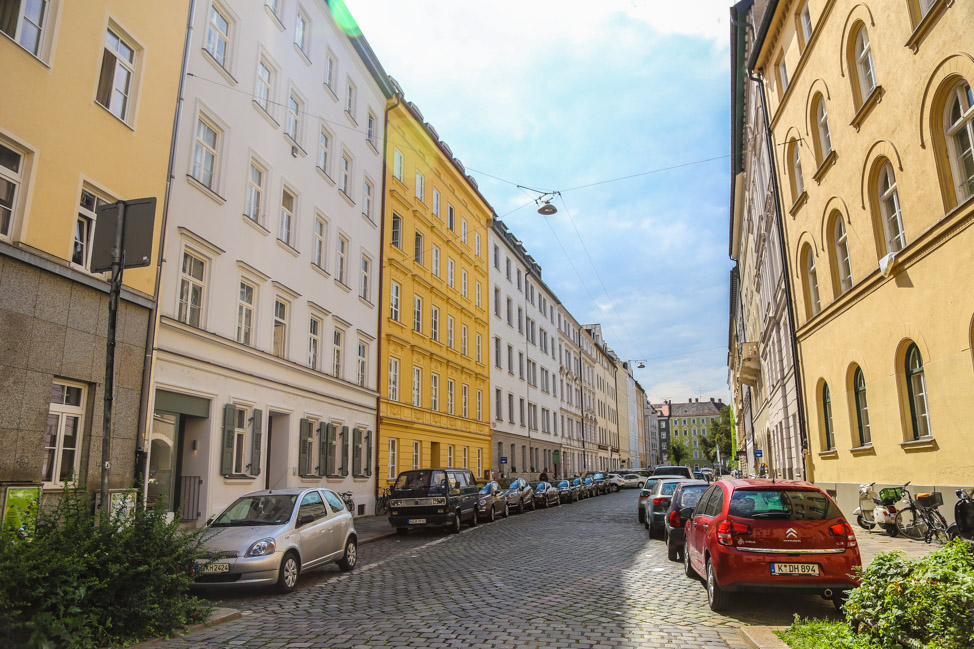
When locals asked us where we were staying, we were met with shocked looks. I knew why: It was a famous hotel back in the 80s and right in the heart of the vibrant gay district. According to Christoph, who many refer to as The Professor for his wide breadth of knowledge regarding all things: “The quarter was THE gay area in Munich in the 80’s. It was Munich’s most famous Sauna Club back then. Today gentrification changed the whole area, and there are still some gay bars, but it’s not really a scene anymore as thankfully people can—in that respect—luckily they feel like.”
So why would we, a married heterosexual couple in our 30s/40s want to stay there? Well, location, location, location. Plus, we’ve always been drawn to such areas that were, in a sense, colonized by the city’s gay population (see: the West Village in New York, the Castro in San Francisco). Not to mention, the staff was wonderful and the price right. We looked at several Airbnbs in that neighborhood—we preferred to stay around Gärtnerplatz, as that is where Anna and Christoph were staying and they were our sole reason for this —and there weren’t any we loved; at least not available during the height of German holidays within our price range.
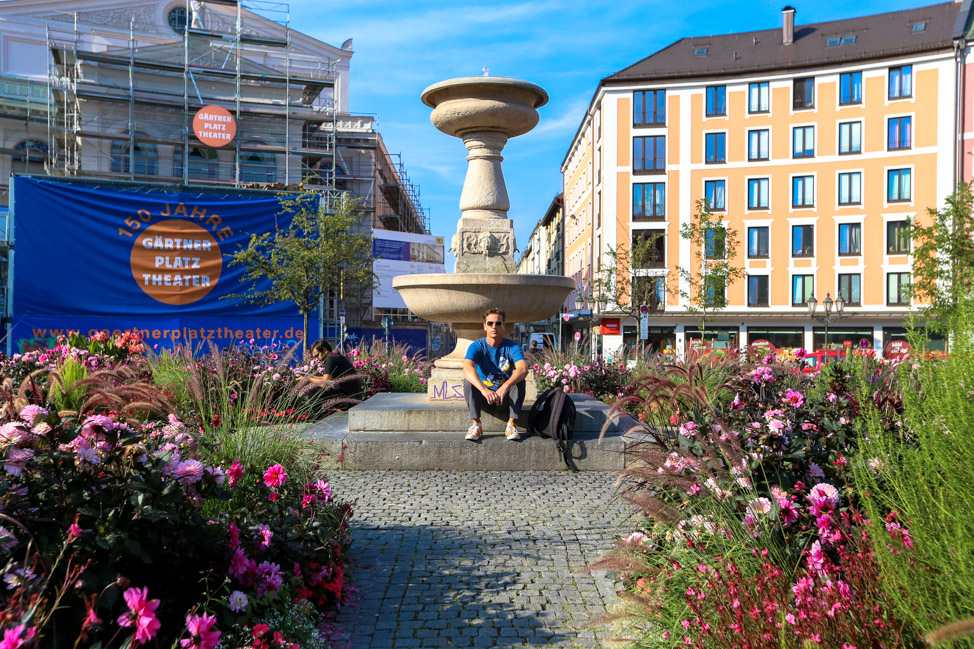
Once we’d had time to clean up, we grabbed a beer at the hotel bar, then took it up to the rooftop once Christoph arrived as our server mentioned the fabulous views of the skyline from the top floor bar (they were indeed, but I couldn’t get a good shot in the dark, so you’ll just have to imagine them for yourself).
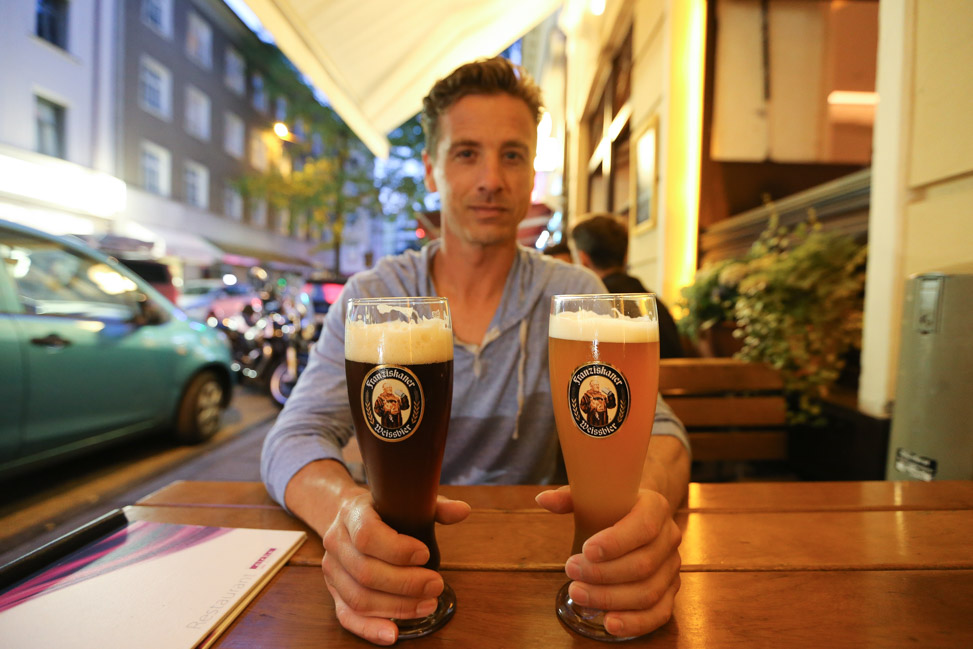
Christoph asked what we wanted to eat and I said, “I dunno. Something not-touristy and local and typical Bavarian food.” So he walked us 15 minutes to one of his favorite spots, , where we had him order a couple of different pork dishes for us (there was no English menu so we let him have free reign, trusting friends that we were), and we cleaned our plates minutes later.
From there, he walked us down to the river, the Isar, but not before we stopped and bought beers at a kiosk that we consumed on the riverfront steps. How cool is that that you can sit around a public place with an open container and not worry about law enforcement? It felt very German (and very awesome).
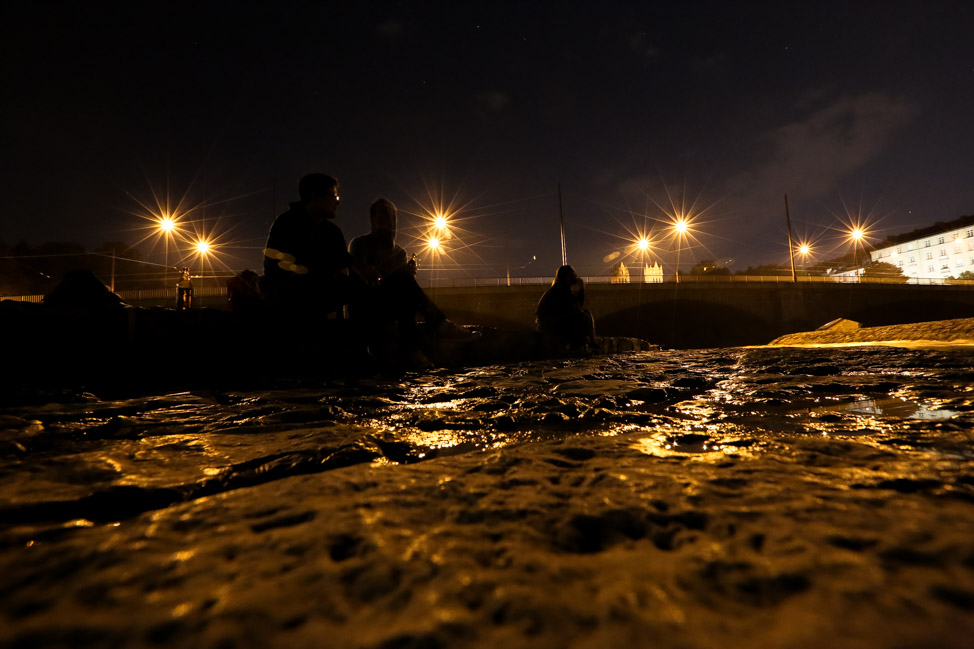
Friday
Our trio of hosts picked us up bright and early the following day, and we headed straight for the Viktualienmarkt, which has been a Munich staple for more than two centuries, where Leo made friends at every stall.

This market had a great variety of things to see and buy—I’m sure if I were to live in Munich, SVV and I would get all of our produce and other ingredients there—but it’s also where they intended for us to have our first Munich breakfast of Weisswurst, a traditional white Bavarian sausage made from minced veal and pork back bacon, which you eat with pretzel and a sweet mustard. It’s much better than it looks, I assure you.
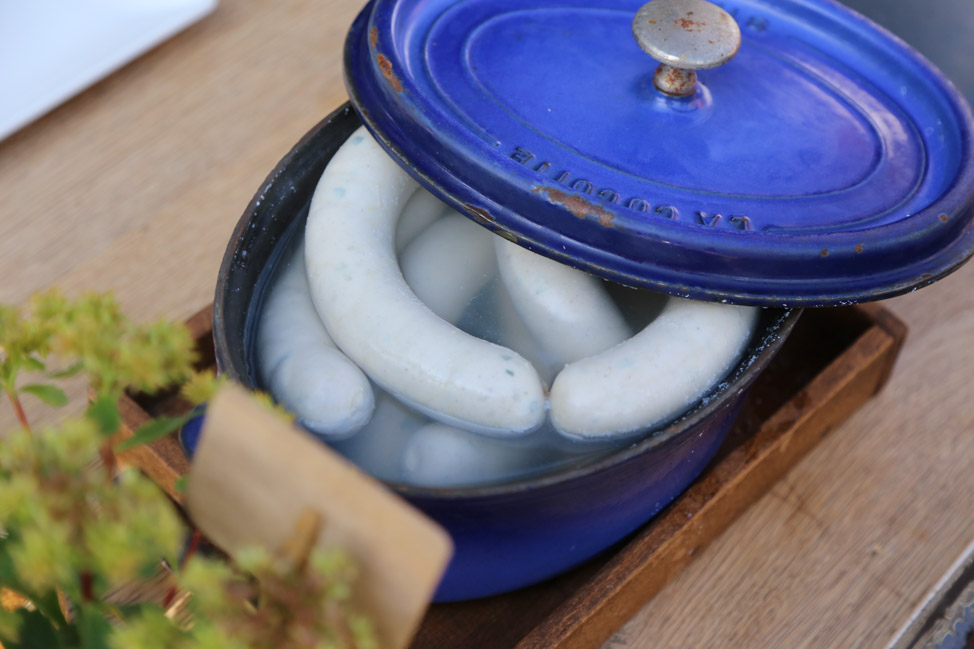

So good in fact that I had it for at least one meal a day the rest of the time we were in Germany.
Then Christoph told us it was only a true Bavarian breakfast if accompanied by a pint of Paulaner.
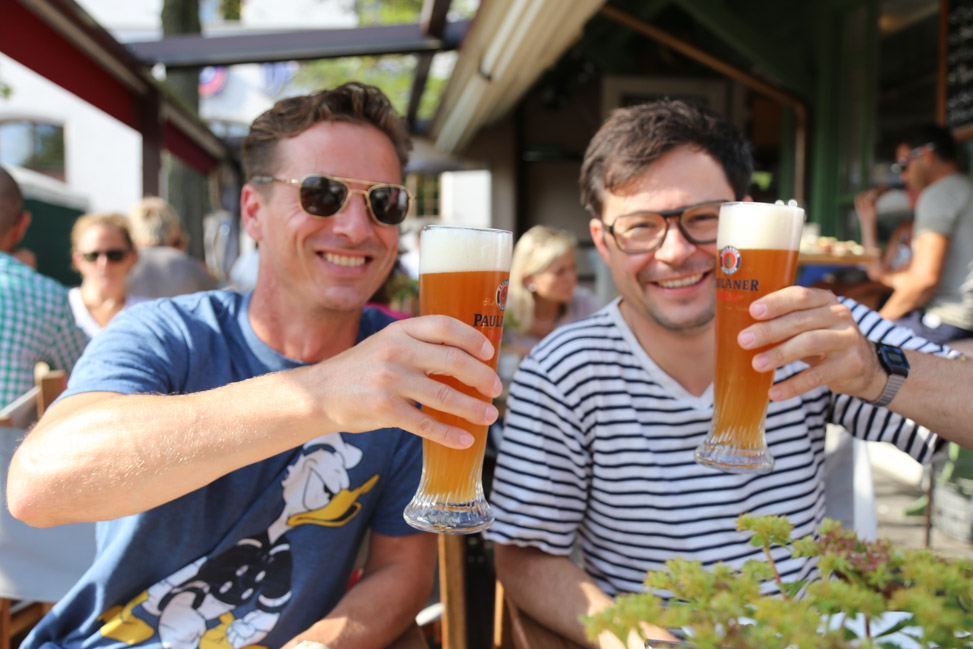
Beer for breakfast? We were meant to be Germany, clearly.

We then set out for the city center, Marienplatz, which wasn’t a total madhouse on a Friday morning, and we took a few minutes to pop in the Cathedral Church of Our Lady (Frauenkirche) right next to the New Town Hall.

This is also the site of the Devil’s Footprint, so there were people clustered around back to see where he’d stomped his foot in annoyance at the architect who built the church and left an indent.

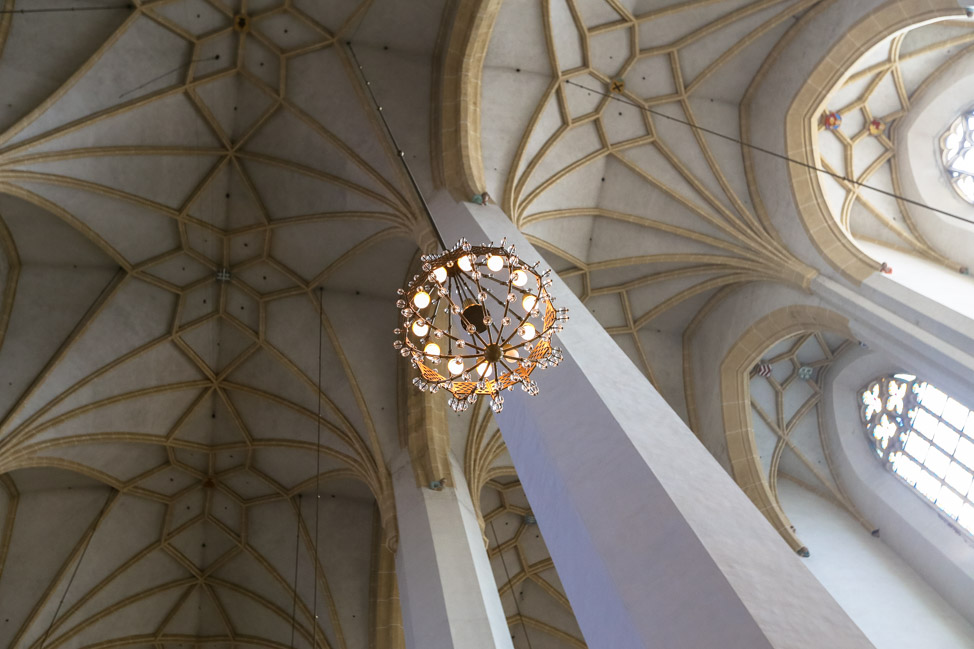
We passed government buildings and the Parliament, stopped at the famed bronze lion outside the Residenz to rub his nose; it’s said to be good luck. As we walked through Odeonsplatz, the Professor gave us plenty of tidbits about Hitler and World War II, pointed out spots of significance and showed us Dodger’s Alley where Muncheners would take the back route to avoid giving the Nazi salute as they walked by the Feldherrnhalle, a compulsory action during the Third Reich.
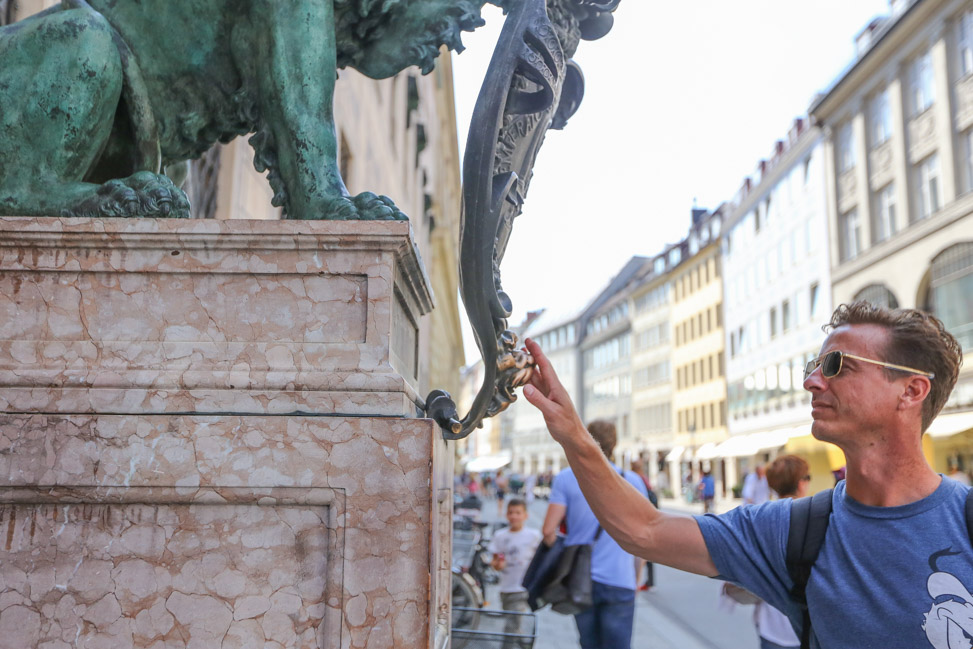
Next, we moseyed up through the Hofgarten, through the Haus der Kunst and to the Eisbachwelle, the surf spot of so many locals.


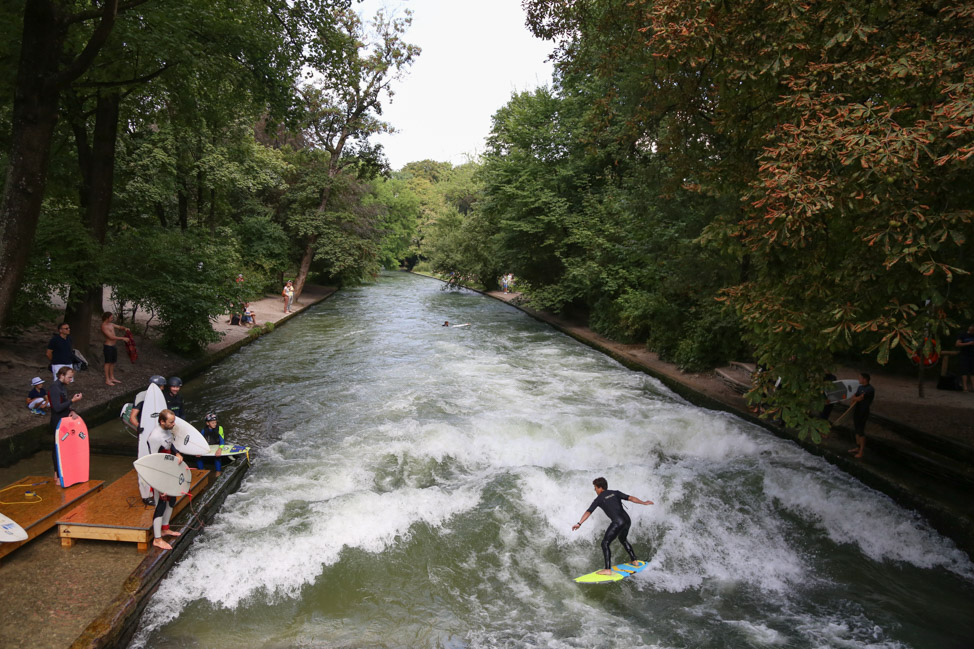
Thanks to German engineers, this icy river is perfectly suited for surfing. After they submerged concrete blocks into the river to slow the flow going into the English Garden, it created a rapid. That was back in the 1970s, and today, intermediate and experienced surfers come from all over to try their hand at the wave. A dozen or so enthusiasts lined the platforms, each waiting patiently for his or her turn on the wave.
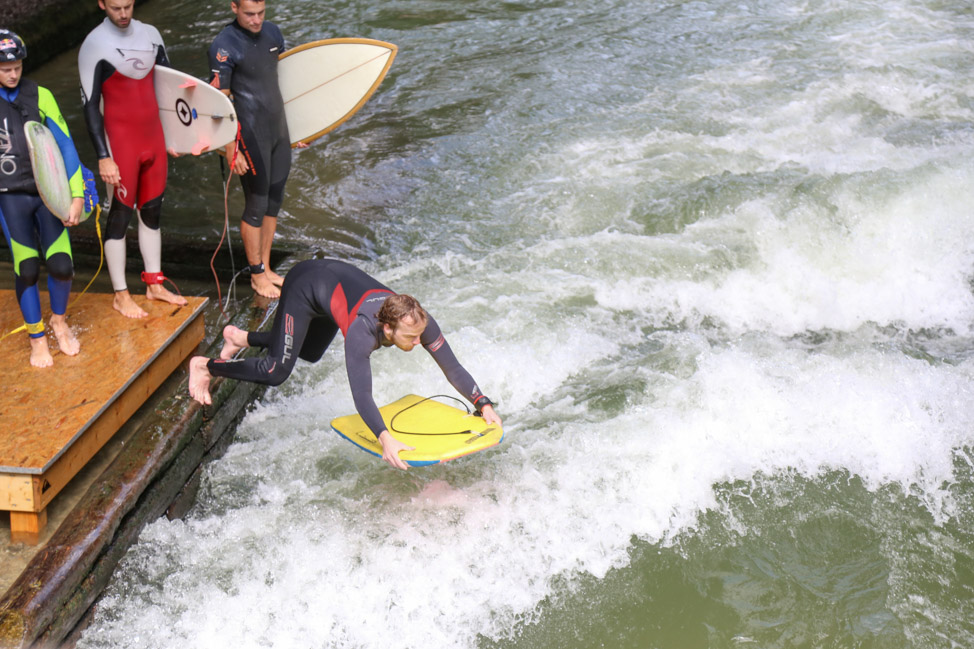


It was so orderly, so … German.
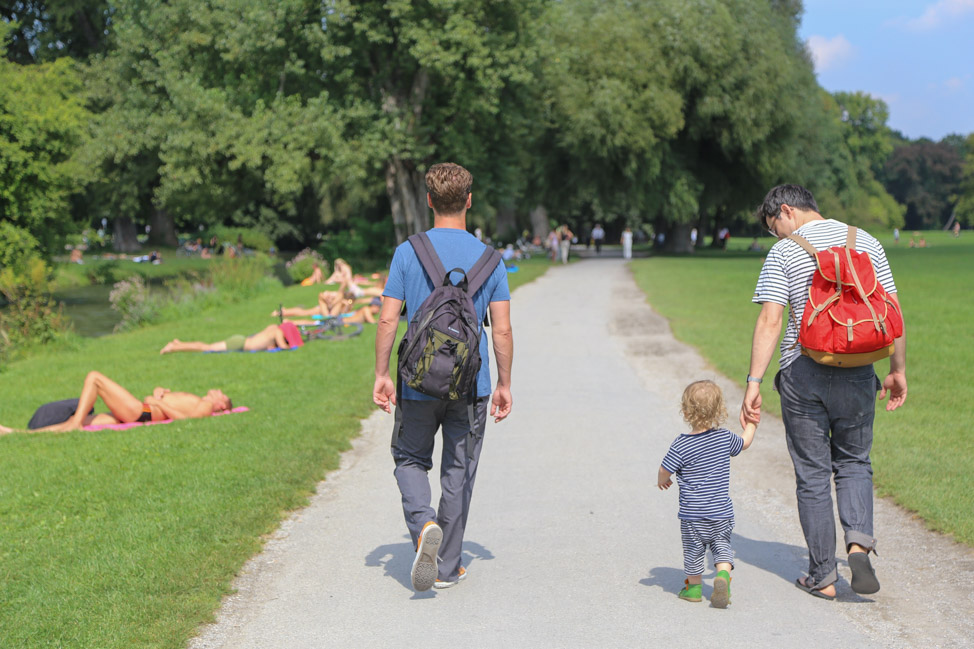
We continued on into the English Garden where SVV and Christoph stripped down to their skivvies—”good thing I wore the good ones today,” SVV remarked—and plunged into the icy current.
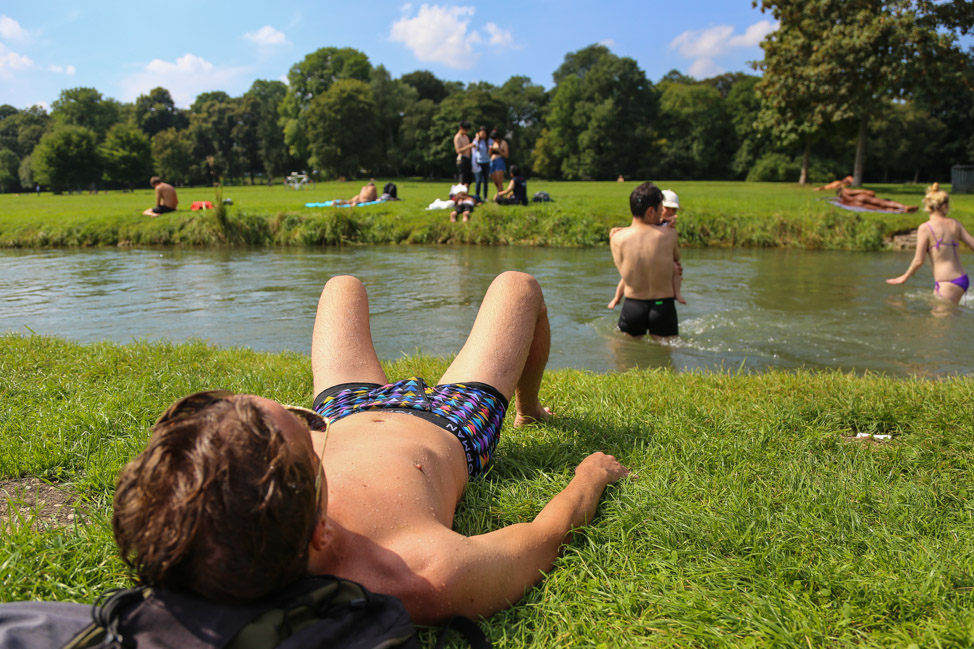
Leo took a quick dip then made friends who were more than happy to play soccer with him for hours on end as we sunbathed.
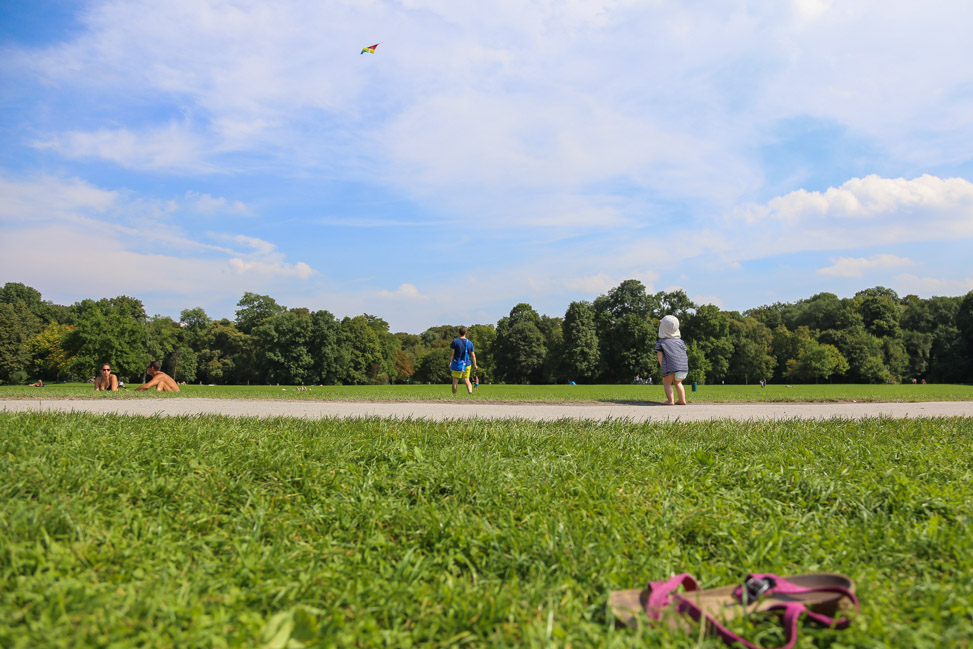
And for those of you who asked in the last post, yes, many of the elderly gentlemen laying out were not doing so in a swimsuit.

A lady came by on a bike and sold us a couple of beers, which placated us for a wee bit longer.
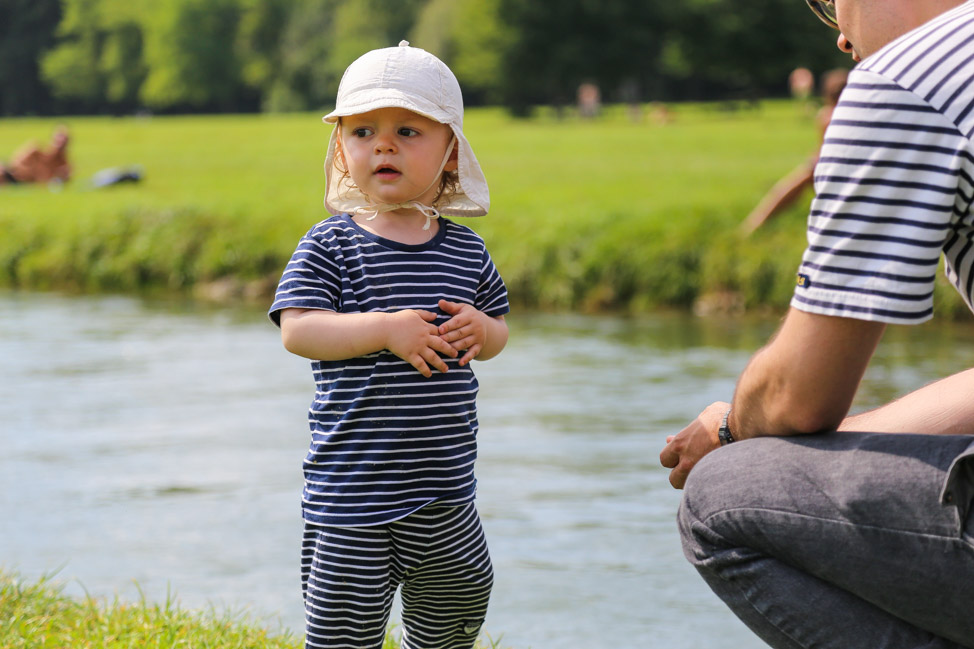
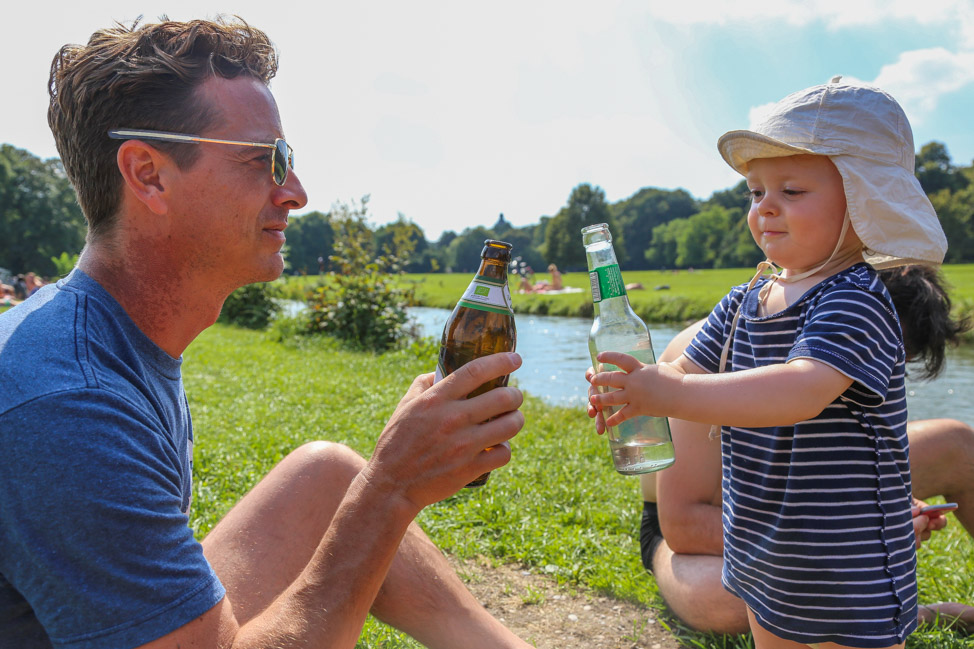
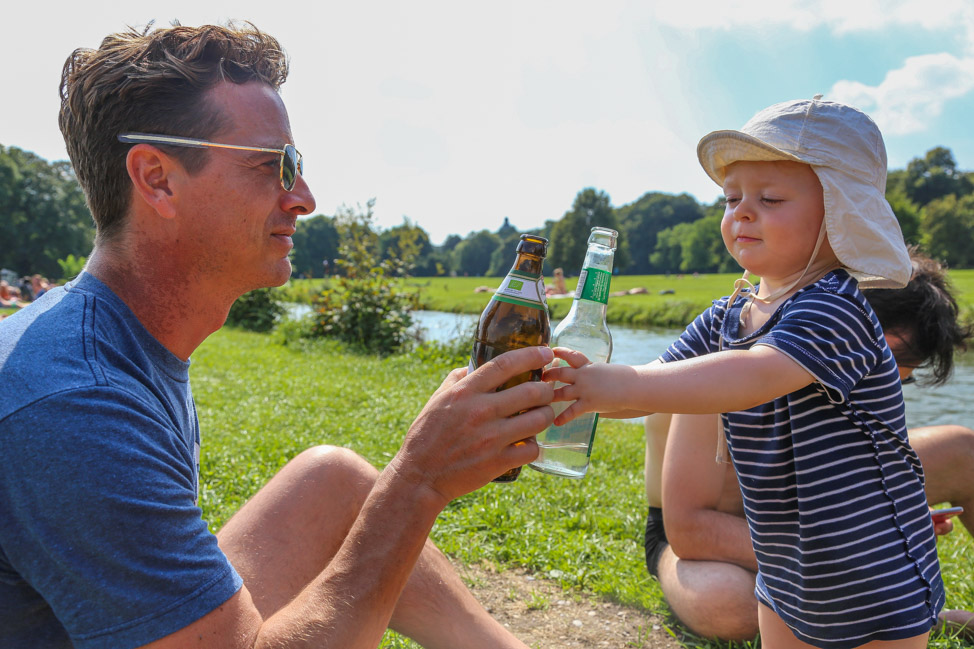

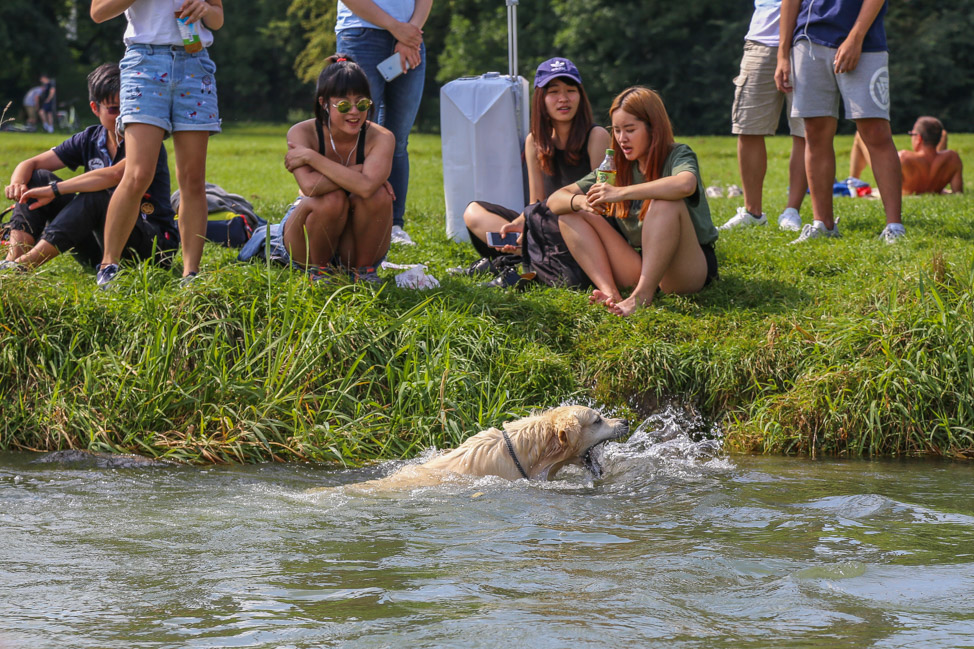
The 900-acre park is absolutely massive and so beautiful—in fact, it’s larger than Central Park and one of the biggest urban parks in the world. And there are so many spots to lounge around on a lazy summer day. I’d be here all the time if I were a Munchener.


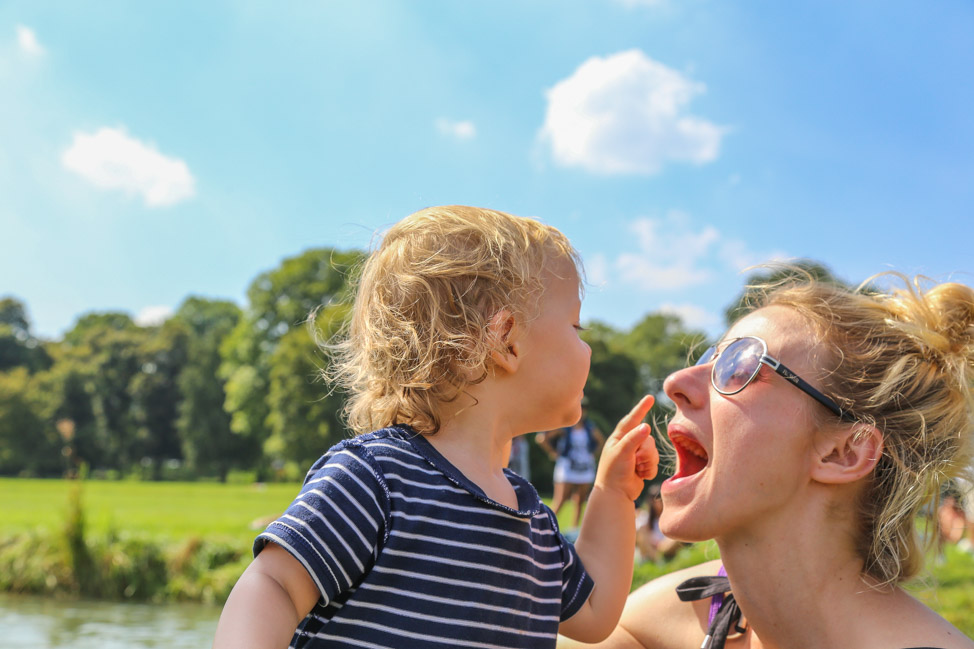
Deep within the park is the famed beer garden Chinesischer Turm, so obviously that was our next stop.
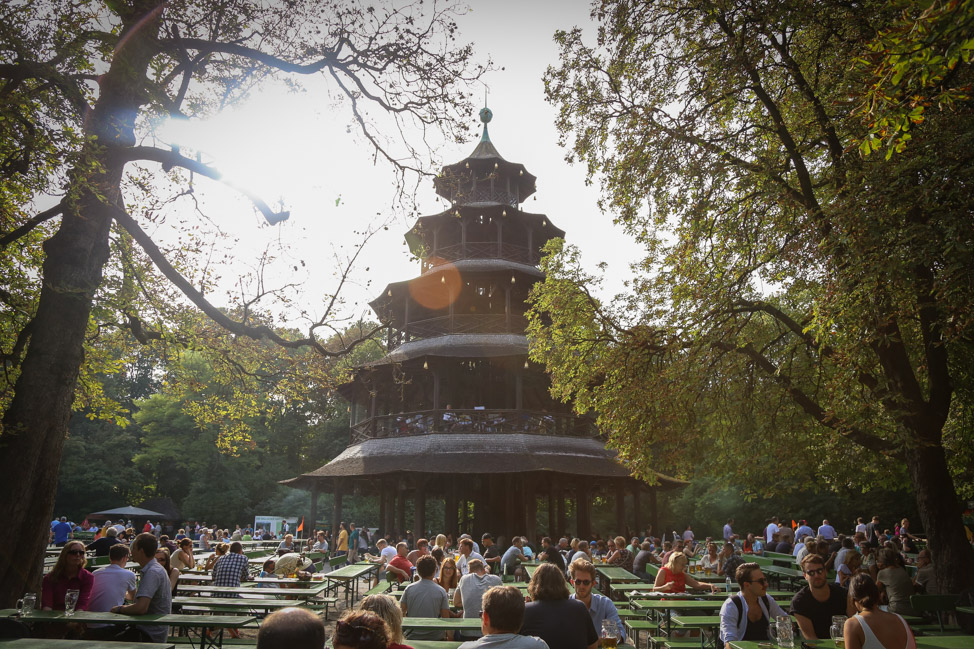
It was here that Leo, at 20 months old, learned how to say “y’all” and also fist bump.
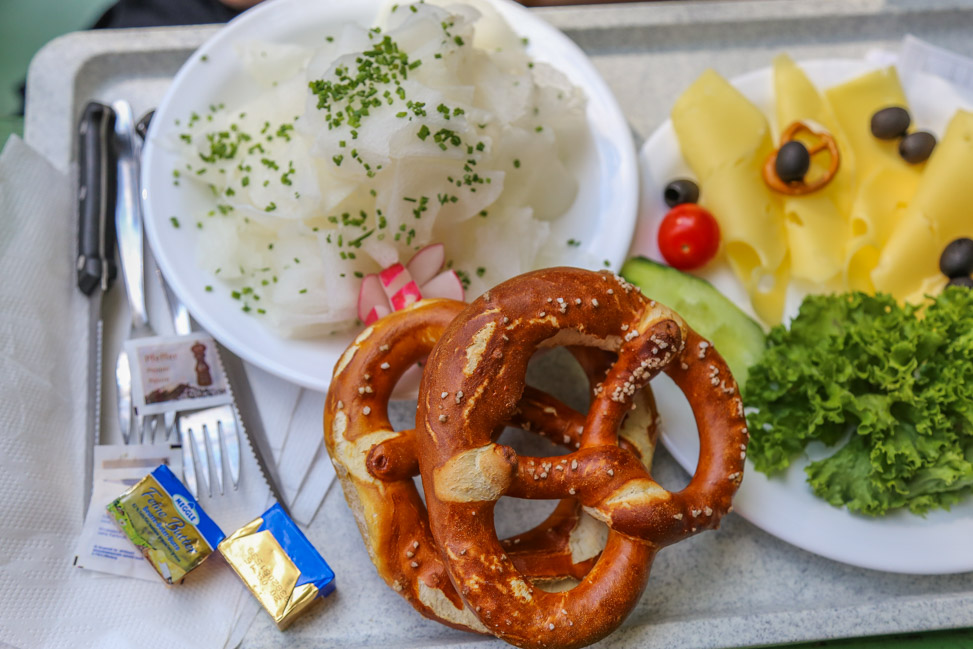

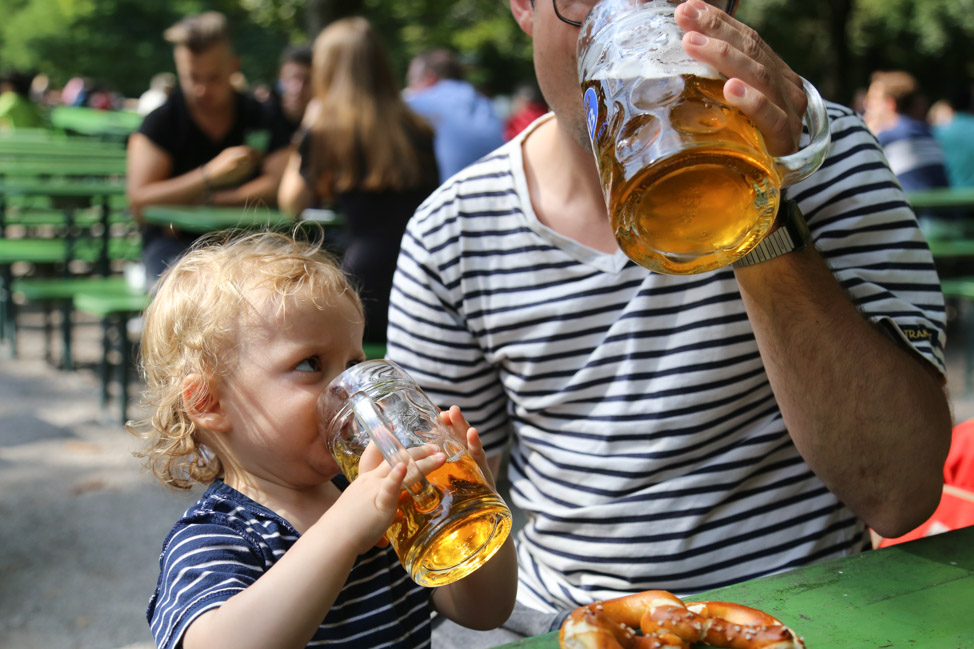


We were both so proud.
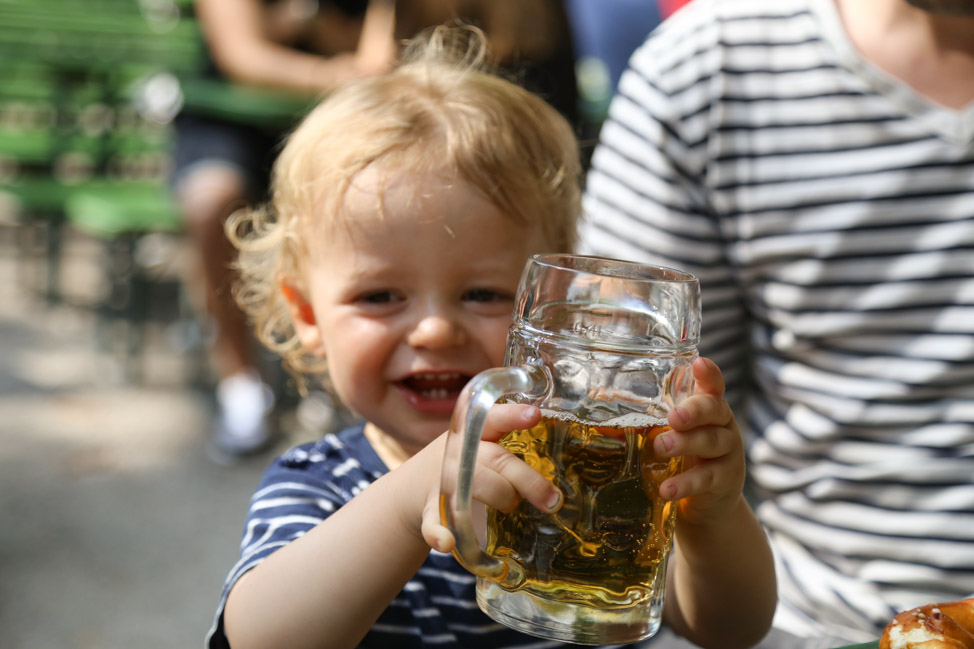
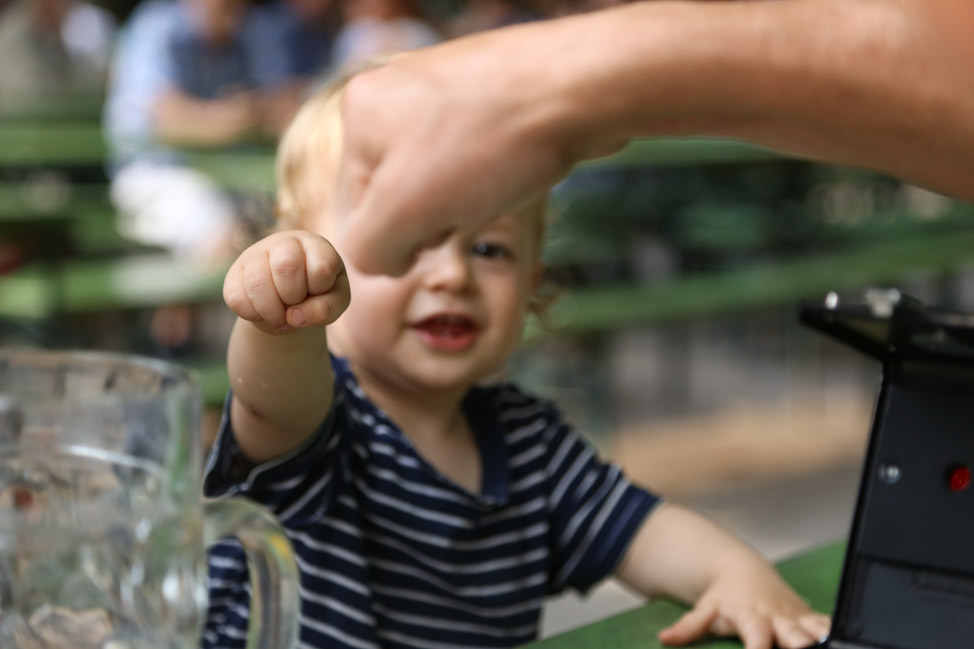
Cheers—or rather, “prost!”—he already knew on his own.

And don’t be alarmed; no, the Germans don’t allow their toddlers to drink that early. It’s apple juice in a beer mug. Still, it was adorable that he kept sitting down with complete strangers and raising a glass to them! Why are German babies so much cuter than all the other babies?

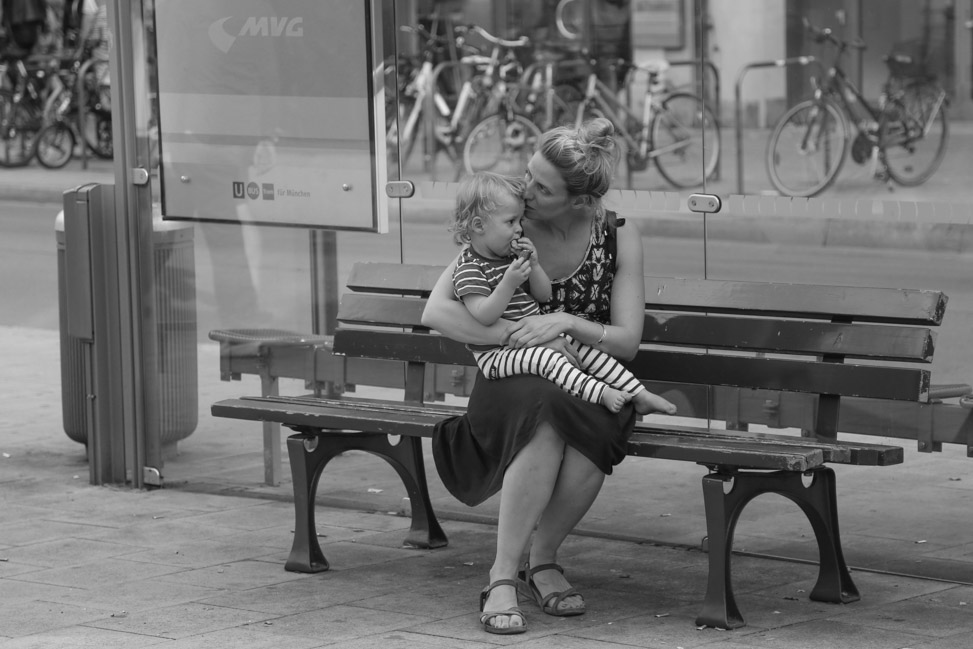
After that, some of us needed a nap (myself included) following our full day of activities and a few very large beers.
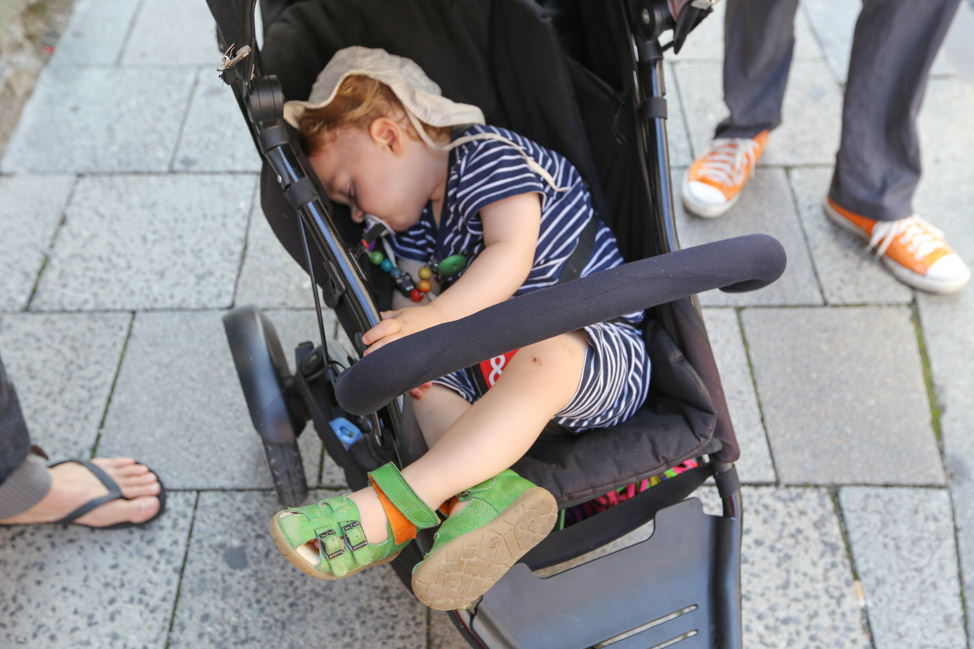
But not before ice cream, of course. There’s one thing I can’t pass up in Europe and that’s the ice cream shops and gelaterias on every single corner. How are people so skinny here?

That night, we went out with Anna’s dad and his girlfriend to a street festival with experimental music before ending the evening with a late dinner with yet another charming local experience at a Bavarian restaurant tucked away on a street we would have never found without the help of Munich natives.
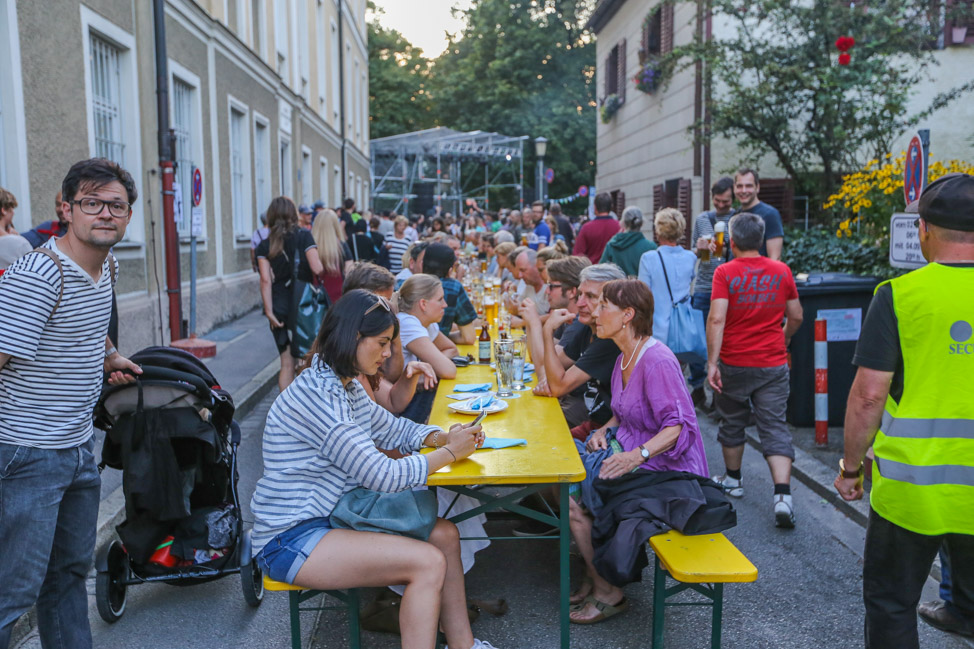
It was an extremely full day indeed, and I was impressed our smallest tour guide lasted from 9am till nearly midnight with just a short catnap here and there.
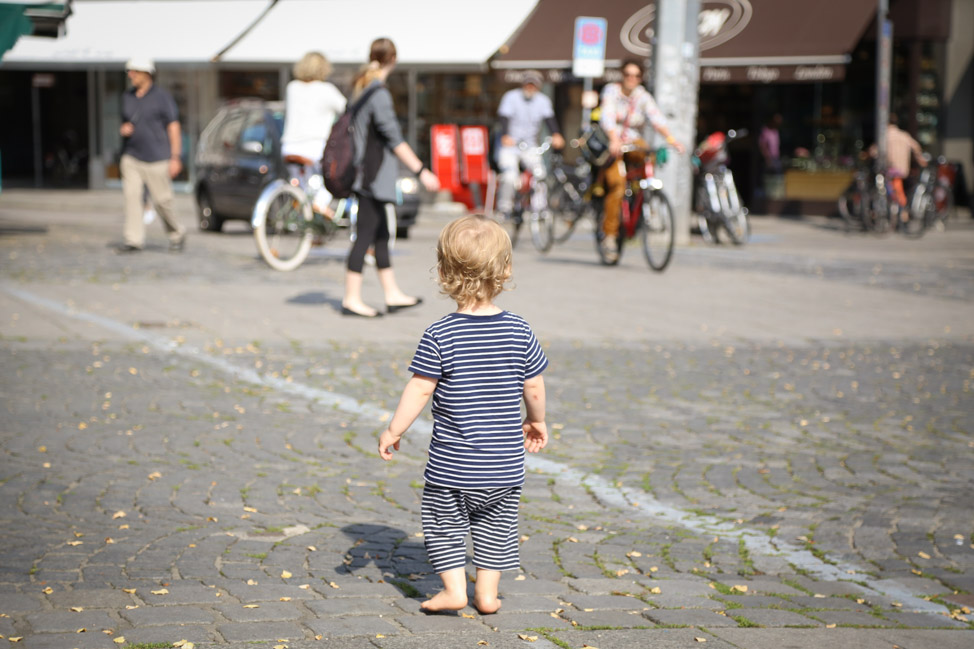
Saturday
After we checked out of our lovely hotel, Christoph, Anna and Leo met us at Gärtnerplatz around 9am and we set off on a walk, stopping in Gärtnerplatz to get pastries, then wandering down to a park so Leo could work out some of that toddler energy while we chatted.
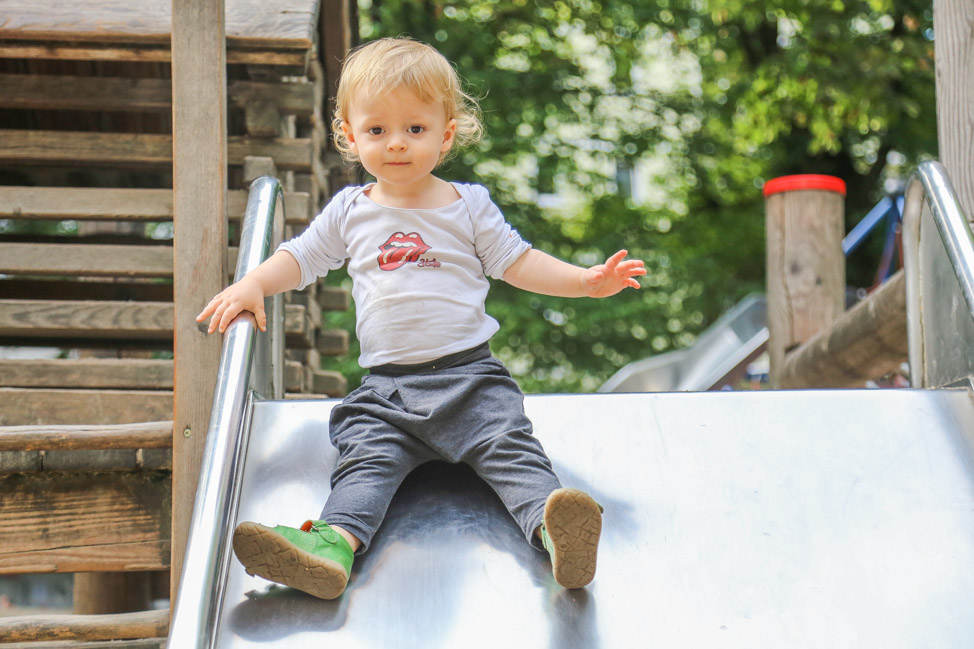
Then, we continued to mosey around the city, winding up in a gorgeous old graveyard, Alter Südfriedhof (or “old southern cemetery”). It’s been there for more than 450 years, having opened as a graveyard for plague victims outside of the city walls.

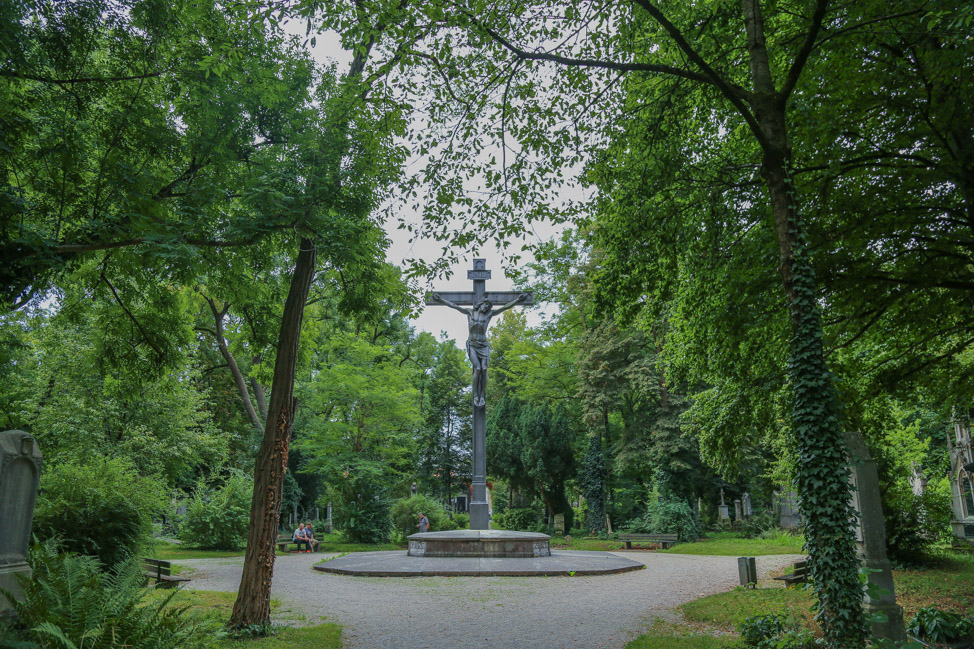
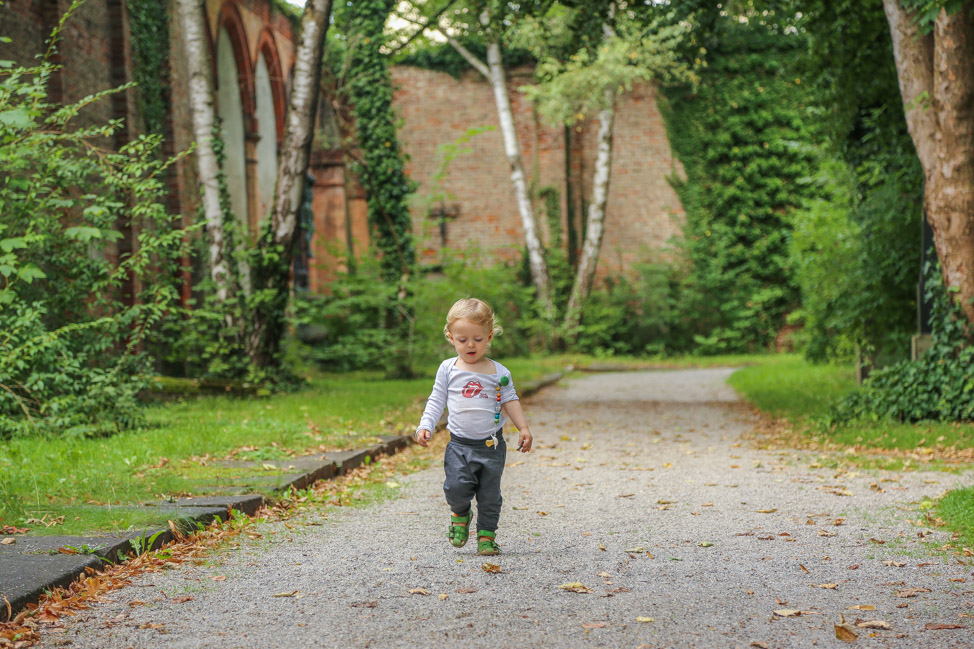

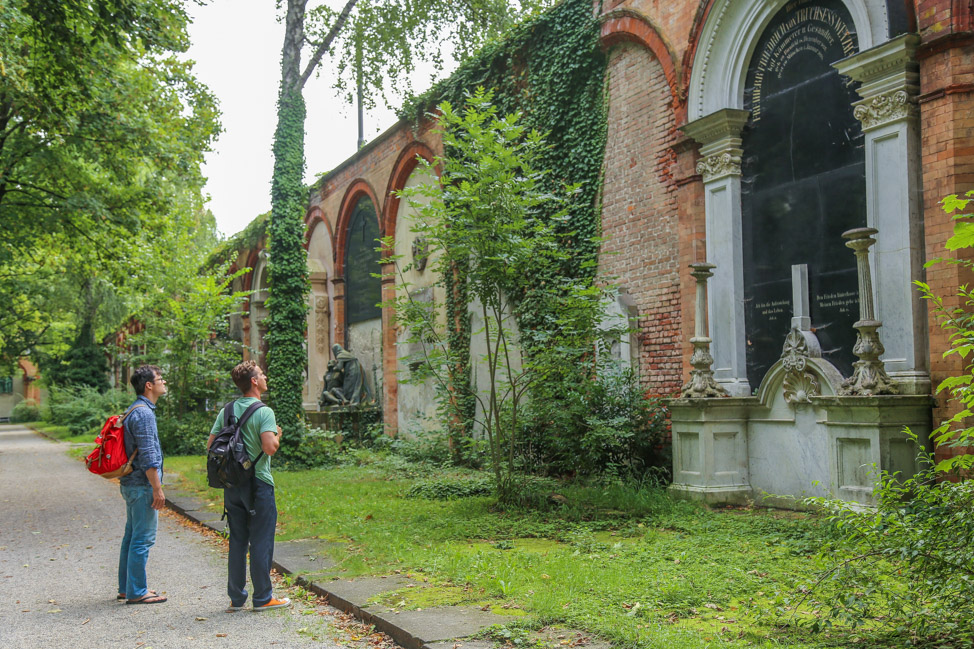
And bonus: It was the site of Anna and Christoph’s first date 13 years prior (after seeing “Blair Witch Project” at the movies—how’s that for a blast from the past?)

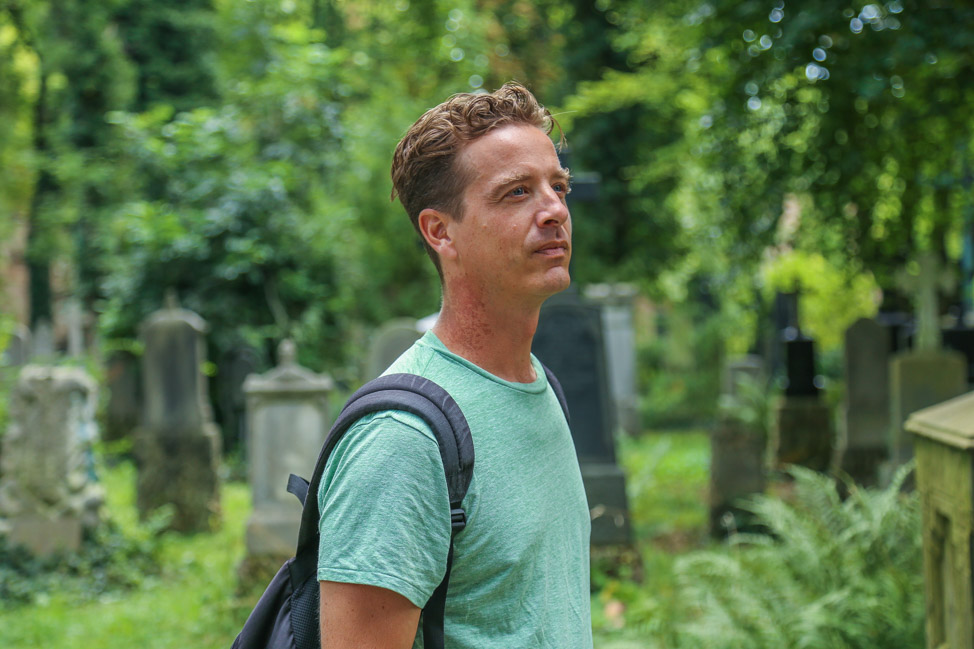
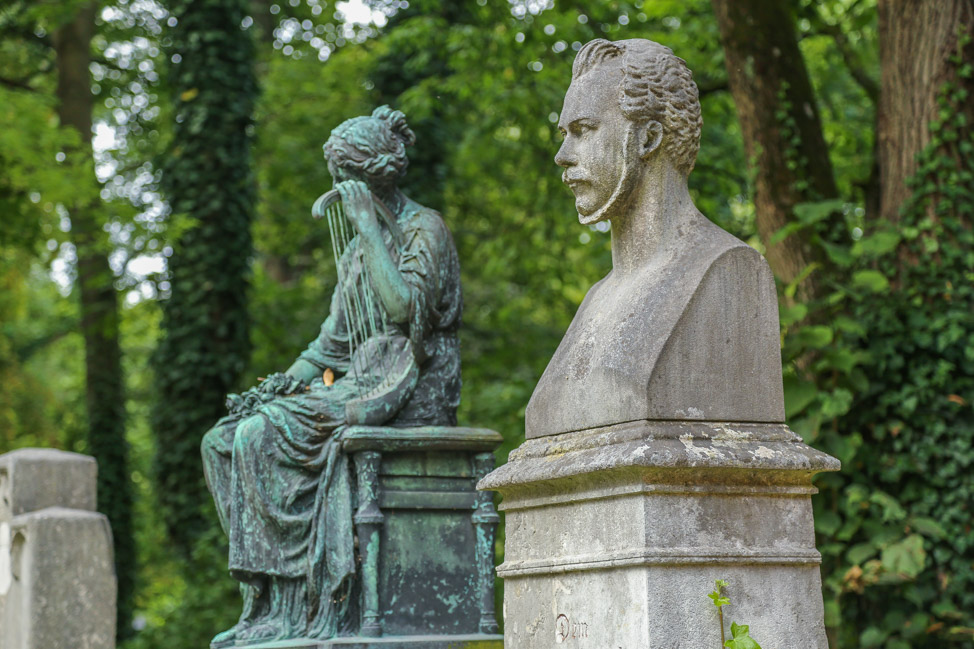
I thought it would be a relatively easy walking day after how tired our legs were from our previous adventures—and the fact that all of us had to hit the road and go our own directions around 3pm—but we wound up logging another 16,000+ steps by noon, according to my Fossil Q (which is my version of a fashionable FitBit that’s posing as a designer watch).
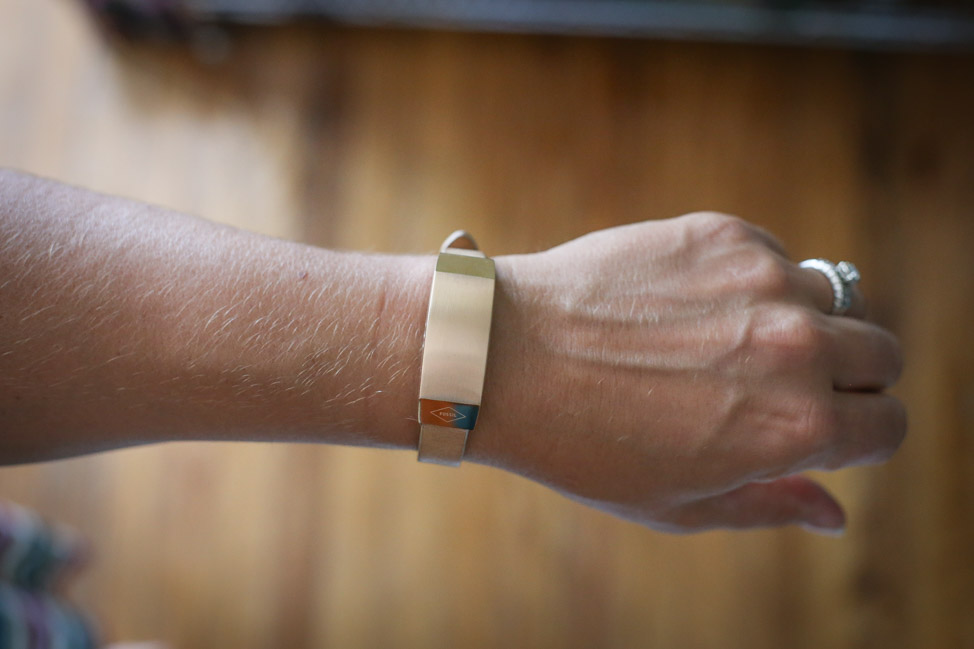
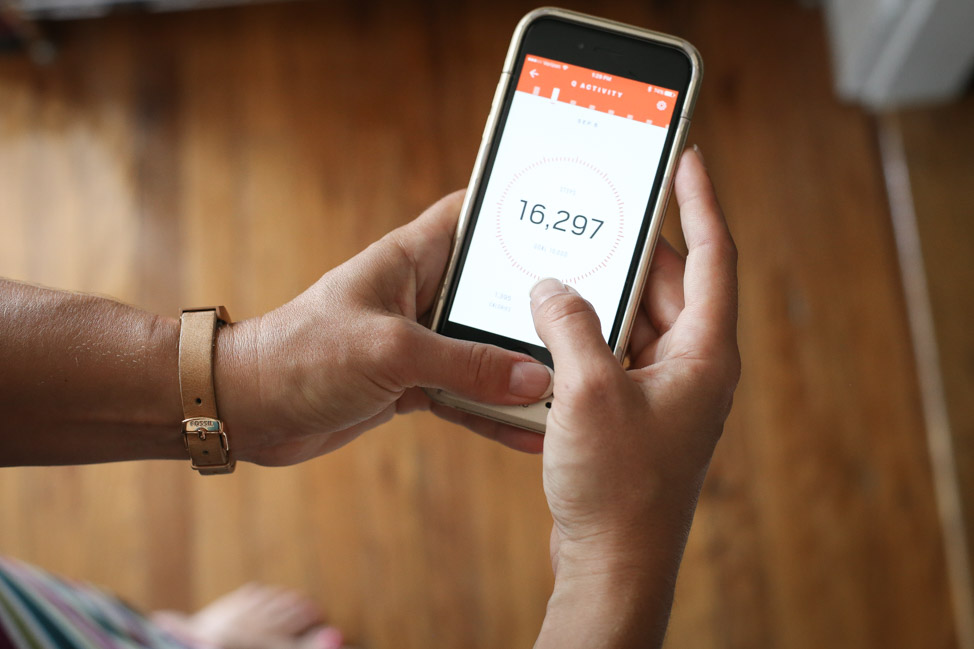
I don’t think I was the only one who was ready to sleep on the car (or train) ride home either.

Of course, as SVV and I were heading out of town in our little rental Fiat, we had to make one last stop at another biergarten appropriately called Boothaus … when in Munich, am I right?

Our time in Munich was brief, right at 48 hours, but man if we didn’t cram it all in and have some quality time with some excellent friends of ours
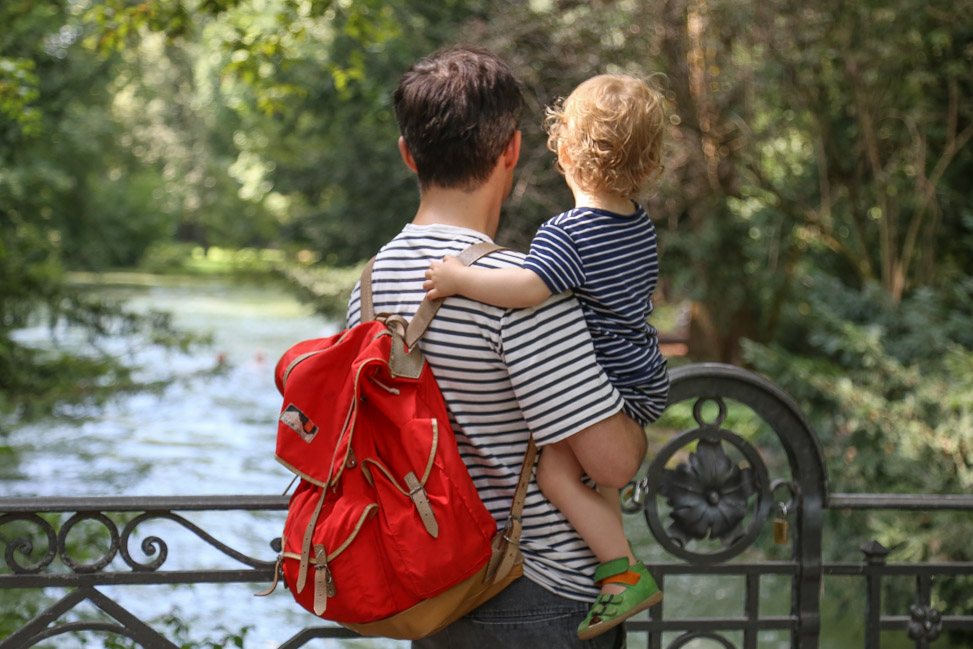
Where to Stay
We absolutely loved our time at Hotel Deutsche Eiche in Gärtnerplatzviertel, and I’d stay there again if I went back to Munich. Similarly, just around the corner, The Glockenbachviertel is lovely; in the heart of Isarvorstadt in Munich’s Old Town, it hugs the river, is quite hip and, at times, also expensive. But I adored all the charming cafes and the abundance of indie shops and boutiques, not a chain in sight. If you can find an Airbnb apartment rental that works with your budget in this area, go for it! You won’t be disappointed.

For Munich everything with the Mittlerer Ring is fair game. Airbnbs gets cheaper the further outside you go from the ring road, but in the words of Christoph: “you don’t really want to do that.” The good news, stay within the ring wherever you find a deal, as Munich is small, the metro goes almost everywhere and most everything worth seeing (or eating) (or drinking) in the city is within a 30-minute walk. We only took the metro one time to go to a street party and then the tram once to get back to our rental car to hit the road. Both times, however, we could have walked had our weary feet not been tired from logging 8- to 11-mile days for a solid two weeks!
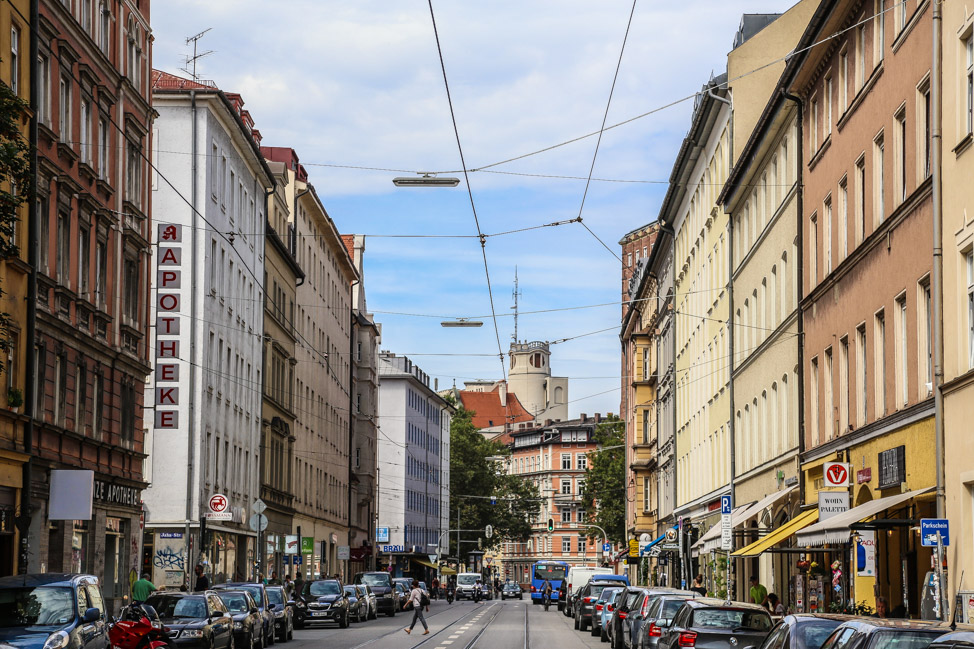
What it Costs
- 1BR flat in Isarvorstadt: from $156/night
- Bus from the airport: $12
- Rental car: $200/week
- To cross the border with a car: $10
- Transit day ticket (for single rider): $7
- Transit day ticket (for groups up to five): $13.70
- Cappuccino and a pastry: $5
- Nice dinner with two rounds of beers: $40
- Large beer at the biergarten: $9
- Deposit for your beer glass: $2 (you get it back if you turn in the glass)
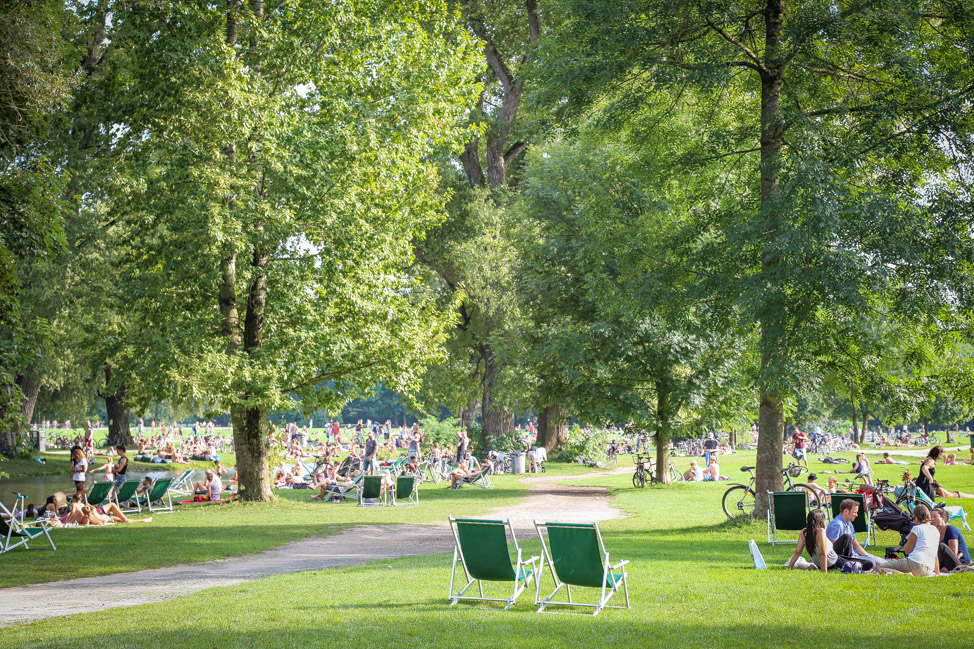
Traveling Around Bavaria
While we rented a car, the German train system is so efficient, you can easily fly into Frankfurt, Berlin, Munich or Hamburg, buy a Rail Europe pass and set up a nice little tour of the country for yourself on a moderate budget. SVV and I are hoping to go back for a month or so in the coming years, and we plan to ditch the car and go by train next time.
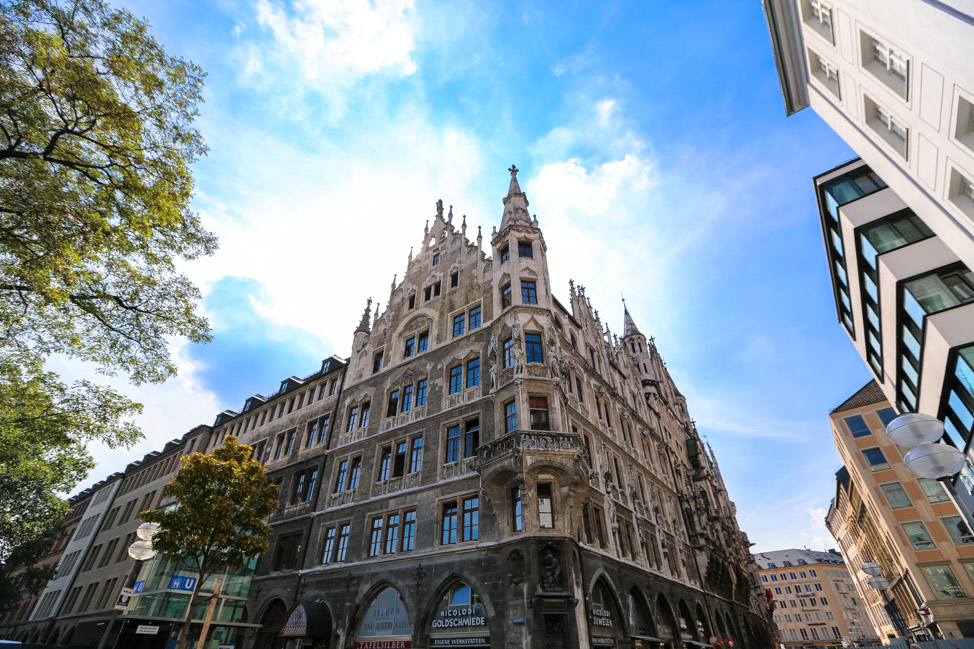
This post contains affiliate links. I’d be ever so grateful if you purchased through said links, as they go toward paying my hosting and development fees that keep the lights on at this here blog!
Save
Save
Save
Save
Save
Save
Save
The post Magic in Munich: A Perfect 48 Hours in Germany appeared first on Camels & Chocolate.
Source: camelsandchocolate.com

